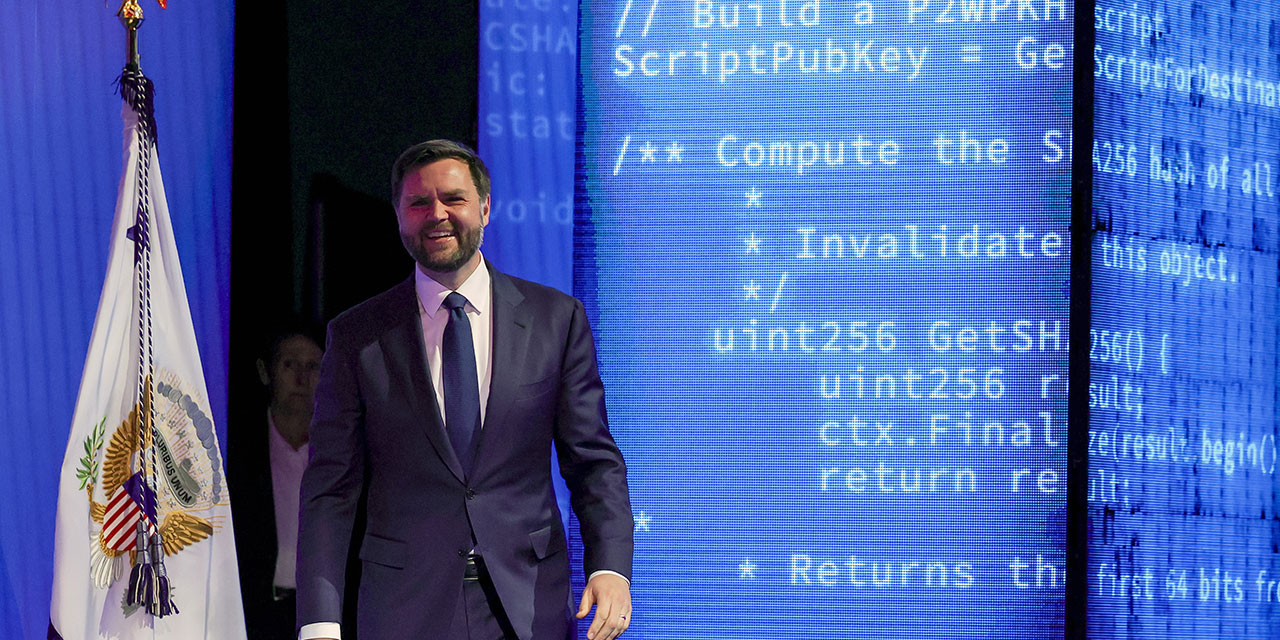
While in Rome last month to celebrate Pope Leo XIV’s inauguration, Vice President J. D. Vance expressed a tempered optimism about artificial intelligence that should cheer economic accelerationists and reassure skeptical conservatives. Speaking with Ross Douthat of the New York Times, Vance distinguished between some of the deleterious social effects of AI that conservatives are right to fear and the productivity and quality-of-life enhancements that they should actively seek. “I think the history of tech and innovation,” Vance told Douthat, “is that while it does cause job disruptions, it more often facilitates human productivity as opposed to replacing human workers.”
In particular, Vance lauded the arrival of AI-supported autonomous trucking, which in recent years has become a political lightning rod. As I wrote in 2023, autonomous trucking exemplifies some of the greatest benefits AI can bring to an industry and its customers. It improves performance on important safety and efficiency metrics, while also freeing human laborers from tasks that are at best tedious and at worst detrimental to their wellbeing. Vance’s attitude—embrace of productivity boosts, caution toward personal dependence on chatbots—is more consistent with economic precedent and conservative values than a wholesale fear of the new technology.
Finally, a reason to check your email.
Sign up for our free newsletter today.
Chatter about autonomous trucks is no longer idle. Just weeks before the Vance–Douthat conversation, the autonomous trucking company Aurora launched commercial routes in Texas for the first time. For now, a human operator will remain on-board. But on the American West’s many open stretches of road, autonomous driving makes too much sense to delay any longer.
Manifest though the benefits may be, some conservatives remain averse not just to AI in a general sense, but to autonomous trucking in particular. Brad Wilcox, eminent scholar of the American family, is one such opponent, describing AI as a “looming threat” to truck drivers. In an April report coauthored with Grant Martsolf, Wilcox identified truck-driving as a job with outstanding family-sustaining fundamentals, claiming it is “the best industry in the private sector for the formation of married families” among the working class.
Wilcox’s analysis (while perhaps slightly clouded by the variable of worker age) indicates that truck drivers are better equipped to support a wife and kids than men with other equivalent-skill jobs. The high pay long-haul truckers garner puts otherwise-teetering families onto firm footing.
But what Wilcox misses—and Vance sees clearly—is that, for an industry like freight, AI is complementary to human work, not a substitute for it. AI enables what economists call the unbundling of tasks. Autonomous driving, such as Aurora is rolling out in Texas, can take over the long and monotonous stretches of a route. But a human is still essential—and will still be for the foreseeable future—off the highway, where the irregularities of tight city streets, loading docks, and warehousing demand a flexible mind. In practice, this will mean men who previously would have been isolated on the highway for hours on end are instead able to move freight closer to home.
“I think what might actually happen is that truck drivers are able to work more efficient hours,” Vance said. “They’re able to get a little bit more sleep. They’re doing much more on the last mile of delivery than staring at a highway for 13 hours a day. So they’re both safer and they’re able to get higher wages.”
They’re also more available, Wilcox should realize, on the home front: for family dinners, Little League games, walks to school, and so on.
The vice president is more broadly correct about the effects of innovation on the workforce. From the power loom to the automobile to the microprocessor, new technologies have periodically disrupted existing labor paradigms. While some workers have borne costs from these tech transitions, demand for human labor in other forms has risen and new economic and productive possibilities have emerged, almost all for the better.
As states like Nevada creep closer to banning autonomous trucks, Vance’s calibrated embrace of AI’s potential is vital. The threat that looms is not AI, but misplaced fears that consign the country to economic stagnation—and family men to a whole lot of wasted time on the road.
Photo by Ethan Miller/Getty Images
City Journal is a publication of the Manhattan Institute for Policy Research (MI), a leading free-market think tank. Are you interested in supporting the magazine? As a 501(c)(3) nonprofit, donations in support of MI and City Journal are fully tax-deductible as provided by law (EIN #13-2912529).
Source link

















